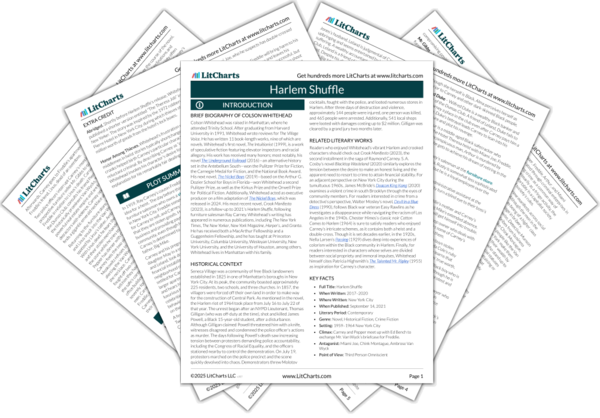Previous
Part 2, Chapter 8
|
Previous
Part 2, Chapter 8
|
Harlem Shuffle: Part 3, Chapter 1 Summary & Analysis |
Next
Part 3, Chapter 2
|


Upgrade to unlock the analysis and theme tracking for all of Harlem ShuffleHarlem Shuffle!
Get LitCharts A+